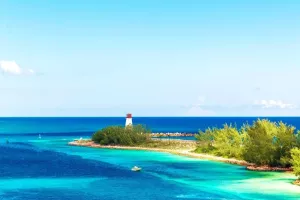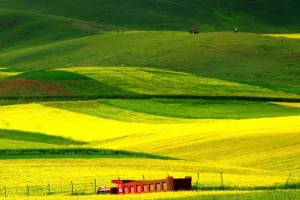Sometimes it seems like summer stretches into a hot, dry mess. But there are some places on the globe where being dry is taken to an entirely new level.
Read on to find out about spots where rain rarely falls, and in some cases hasn't fallen in millions of years. In these dry climates, it's difficult to grow anything because continuous evaporation and transpiration means that water doesn't stick around for plants or people to slurp up.
1. Atacama Desert, Chile
One of the largest deserts in the world, the Atacama Desert is situated in South America and the plateau is said to be one of the driest places in the world. In fact, some weather stations here have never received rain, while others have not received any significant rainfall from the 16th century to the 20th century. The region is so parched that the mountains are totally glacier-free. This dessert is so dry because the cold water that is transported from Antarctica by Humboldt currents prevents the formation of large rain-carrying clouds. Antarctica holds two titles as one of the driest continents on earth and also is the record-holding coldest place on earth. A fun fact about this desert: every five to 10 years a historic rainfall occurs which results in brightly colored flowers and vegetation that sprawl across the desert. That said, this beautiful display of color only lasts about a week, but it is truly an incredible display of what mother nature is capable of.
2. McMurdo Dry Valleys, Antarctica
It is hard to believe that the Earth’s driest place is in one of its poles, but this is the truth. It’s in Antarctica: the McMurdo Dry Valleys – they are a row of snow-free valleys located within Victoria Land west of McMurdo Sound. The region is one of the world’s most extreme deserts and includes many features including Lake Vida and the Onyx River, Antarctica’s longest river. The Friis Hills in Taylor Valley, one of the McMurdo Dry Valleys haven’t seen water in 14 million years. The Dry Valleys are so named because of their extremely low humidity and their lack of snow or ice cover. They are also dry because, in this location, the mountains are sufficiently high that they block seaward flowing ice from the East Antarctic ice sheet from reaching the Ross Sea. At 4,800 square kilometers (1,900 sq mi), the valleys constitute around 0.03% of the continent and form the largest ice-free region in Antarctica.
3. Pelican Point, Namibia
Pelican Point is located in the sand-dune filled African country of Namibia. This may come as a surprise because Pelican Point also happens to be an incredible surfing spot but it is in fact, one of the driest places in the world. Pelican Point receives about 8.13 millimeters of rain annually but that doesn’t deter surfers from coming and catching big waves. It rarely gets very hot or very cold here and features the very rare mild variation of the arid climate, due to the cold offshore currents near the bay.
4. Aswan, Egypt
The climate of Aswan is extremely dry year-round, with 0.861 mm (0.0338 in) of average annual precipitation. The desert city is one of the driest ones in the world, and rainfall doesn’t occur every year, as of early 2001, the last rain there was seven years earlier. Aswan is one of the least humid cities on the planet, with an average relative humidity of only 26%, with a maximum mean of 42% during winter and a minimum mean of 16% during summer. The sky of Aswan is extremely clear, bright, and sunny year-round, in all seasons, with a low seasonal variation, with about some 4,000 hours of annual sunshine, very close to the maximum theoretical sunshine duration. Aswan is one of the sunniest places on Earth.
5. Ica, Peru
The city of Ica is the capital of the Ica Region located in southern Peru. Located on the southern side of Lima and bordering the Atacama Desert, this city is considered one of the driest climates in the world because it only sees about 2.29 mm of rainfall each year. But this dusty region wasn’t always so dry! Back in 2007 scientists actually found fossil evidence of a species of penguin that used to inhabit the area. The dry climate doesn’t stop tourism in this city! There’s an excellent museum located in the city that features amazing exhibits such as prehistoric artifacts to pre-Colombian mummies. Huacachina oasis, set in the midst of the sand dunes is another huge tourist draw for international travelers and is a sight worth seeing!


